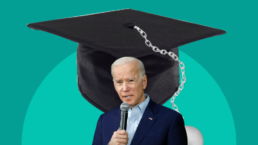Brendan Rooks, The Nation
Over the course of the Covid pandemic, we have seen one of the largest upward shifts of wealth in recent history. According to Forbes, there were 660 more billionaires in 2021 than the year before. At the same time, enrollment in community colleges and four-year universities plummeted in the United States, with the student debt crisis creating a situation in which low-income communities are hesitant to pursue higher education because of the likelihood of leaving with crippling debt.
In order to stop the student debt crisis and prevent future generations from being condemned to the reality that borrowers face today, we need to adopt a free college system. Such proposals already exist in both the House and Senate, with two of the most notable pieces of prior legislation being Senator Bernie Sanders and Representative Pramila Jayapal’s College for All Act, as well as Senator Brian Schatz and Representative Mark Pocan’s Debt-Free College Act. Such bills would allow for students to obtain a college education without fear of facing a lifetime of debt, while also helping communities that have been historically excluded.
The current budget reconciliation bill being considered by Congress includes two years of free community college, which would be a monumental first step in the fight for free higher education. The plan is a priority for President Biden who has pitched it as a critical component of his Build Back Better plan and sees free community college as part of his economic agenda domestically and abroad. On the campaign trail, Biden noted that “sixty-five out of 100 jobs today require more than a high school degree” and went on to warn that “any country that out-educates us will out-compete us.” According to the White House, the plan would allow nearly 6 million students and workers to earn a degree or credential for free.

Recent Posts
What To Do When You See ICE In Your Neighborhood
July 14, 2025
Take Action Now How can you deter the Trump administration’s immigrant deportation machine when it pops up in your community? Follow these…
ICE Campaign Of Violence Will Lead To More Deaths
July 14, 2025
Take Action Now Jaime Alanis’s death shows the horrific consequences of a secret police force behaving with utter impunity.By Natasha Lennard, The…
Hague Group: “Concrete Measures” or Sack of Cement? Will It Move to Sanctions, Peace Force and Ensuring Aid to Gaza?
July 13, 2025
Take Action Now Will the meeting in Colombia be a coalescence of global opinion driving states to just action — or just more rhetoric from various…
Why Are Democratic Lawmakers Still Meeting With Netanyahu?
July 12, 2025
Take Action Now Pictures show Democrats like Chuck Schumer standing next to Netanyahu, smiling.By Sharon Zhang, Truthout A bipartisan group of…




